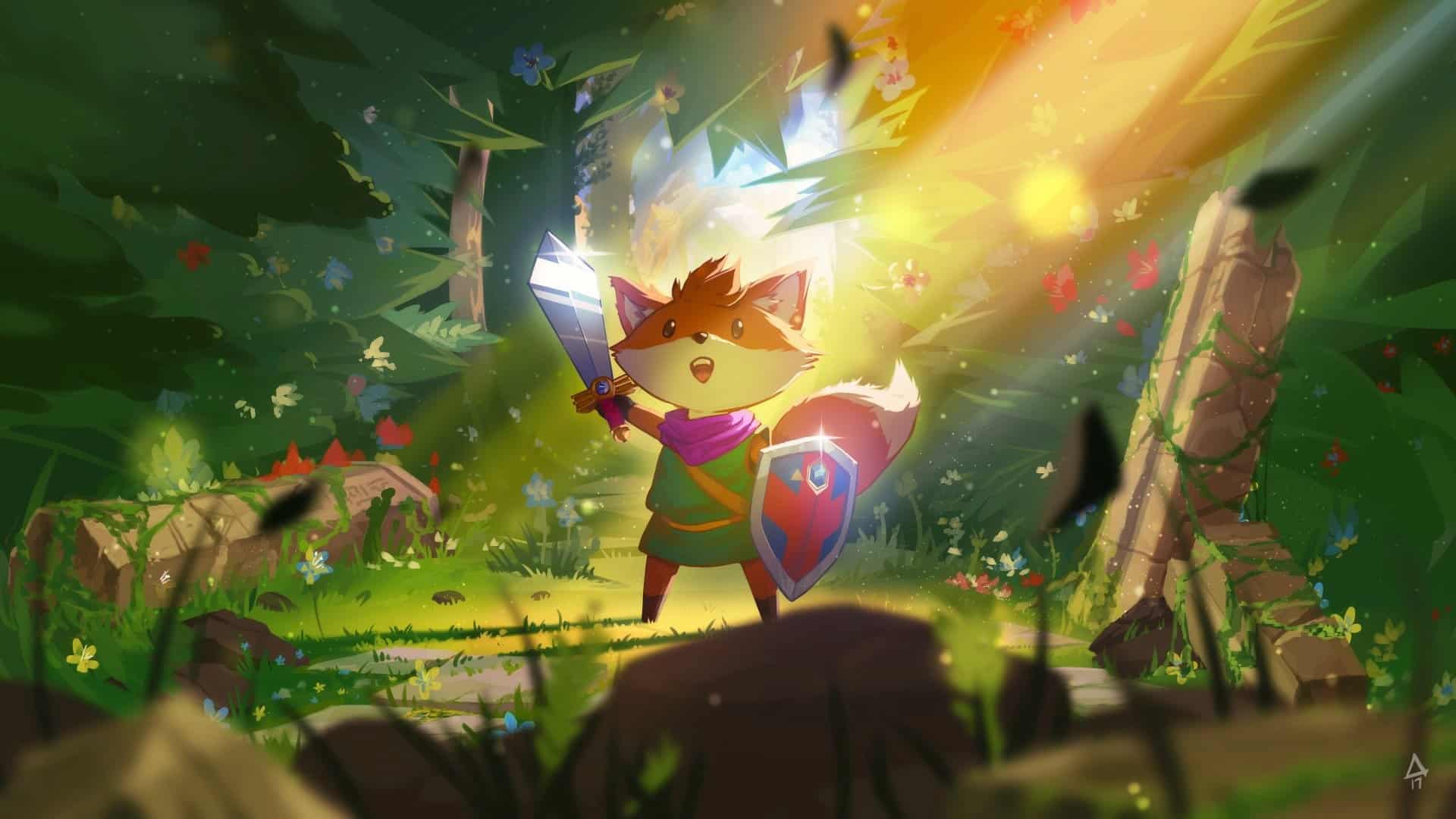Video Gamer is reader-supported. When you buy through links on our site, we may earn an affiliate commission. Prices subject to change. Learn more
To what do we owe the pleasure of Tunic? Well, to The Legend of Zelda, certainly. Our hero may be a fox with a bushy and blushing pelt, but he isn’t embarrassed about his influences. Hence the hue of the title garment, as green as woven sward, which he sports proudly throughout. The game, which was developed by Andrew Shouldice, was originally entitled Secret Legend, and I can only presume that the change was made because there was, frankly, nothing secret about it. Mind you, it could be down to superstition. In one interview, Shouldice referred to his main inspiration as “certain classic triangle-seeking games”—as though Miyamoto’s series were as unutterable as Macbeth. Few shadows, I suppose, are as bewitching.
And yet, aside from the sword, the shield, the potions, the bombs, the somersault, and the staff that spits fire—the essential trappings and trimmings of Zelda, in other words—Tunic is cut from different cloth. And that’s a blessing: too much reverence and you run out of breath. Playing the demo, a few months back, I wondered if the game’s vision didn’t seem a little strained—less Triforce and more of a forced try. In the event, however, it comes off. Partly, this has to do with its world, or, rather, with the numerous worlds that are cracked and refracted in its gaze. Though we are treated to the staples we would expect—deep forests whose floors are dappled by a sun-pricked canopy, stone and stained-glass strongholds, and water of depthless blue—note the sealed stillness of it all. No chatty N.P.C.s, no intact towns, and the trees unstirred, with no wind to wake them.
The only zephyr that does blow through Tunic is supplied by Terence Lee and Janice Kwan, whose billowing synths bespeak a game in thrall to the computer-powered past. When I started the adventure, the soundtrack felt at odds with the action. Here was a bouncing foxlet, with a forelock of charming waft and a sword in his paw; should we not be in the company of pan pipes and frolicking strings? Not so, for Shouldice, it seems, is equally moved by Fez. Hence the golden mini-cubes that litter the landscape; the score, which echoes Rich Vreeland’s work on that game; the hidden depths, concealed by the angle of the camera; and even a language of runes, to be deciphered by its more fevered fans. In Fez, the clue that tipped us off to the notion that its symbols were, in fact, translatable was the background image of two animals, one lively and the other in a doze: a quick brown fox jumping over a lazy dog.

There is nothing so fiendish and near-subliminally subtle in Tunic; despite his choice of protagonist, Shouldice is not on a mission to outfox. Indeed, the game’s principal pleasure is the joy it takes, and engenders, in the way that things slot together. The levels arrive cleverly back on themselves, and, over the course of the adventure, we collect the pages of an instruction manual, printed with pictures and hints. They are lined, too, with those inscrutable runes, but, somehow, you don’t feel as if you’re missing out—rather that you are being teased, your imagination tended and fuelled. A friend of mine pointed out that this mechanic may have sprang from the experience of importing Japanese games, and poring over their impassive booklets. So, too, could it hark back further still, to an early childhood strewn with the game boxes and magazines of older siblings, whose codes would remain uncracked for years.
Where there is challenge is in combat. Given the shield, the quick-spilling bars of stamina and health, and the dodge roll, replete with a brief window of invincibility, the easy comparison is to Dark Souls. Only, with its soft look and its lack of quite so ravenous difficulty, Tunic resembles a children’s book—“My First Miyazaki”—ideal for the rearing of future diehards. Not that I didn’t emit squalls of fury at a particularly trying boss, or at the loss of a portion of gold upon death (recoverable, once you revive at one of the many altars you find).
But despite its obvious muses, Tunic manages to rise above mere flattery, by paying deeper homage to the medium itself. It took me hours to realise that what I had, on some unconscious level, presumed to be computer keys were actually bushes—sharply cut clumps of beige topiary. But the lateness of that discovery—though vaguely embarrassing—only proves that the world of Tunic belongs as much to games as it does to the hardware and the history that begets them. The fact is, those letterless keys didn’t depress the scenery; they were, in a way, what prompted the scenery to be conjured forth. There remains an airless feel to Shouldice’s approach: a sense that we are not questing through a world in need of rescue so much as a world in need of our presence, and our contemplation. And the structure, needless to say, consists of much triangle-seeking. But the feeling of discovery that issues from its winkled nooks is that much richer for the pages of context in which it is folded; neither secrets nor legends, just the runes of games, and days, gone by.
Developer: Andrew Shouldice
Publisher: Finji
Available on: Xbox Series X/S [reviewed on] Xbox One, PC
Release Date: March 16, 2022
To check what a review score means from us, click here.

